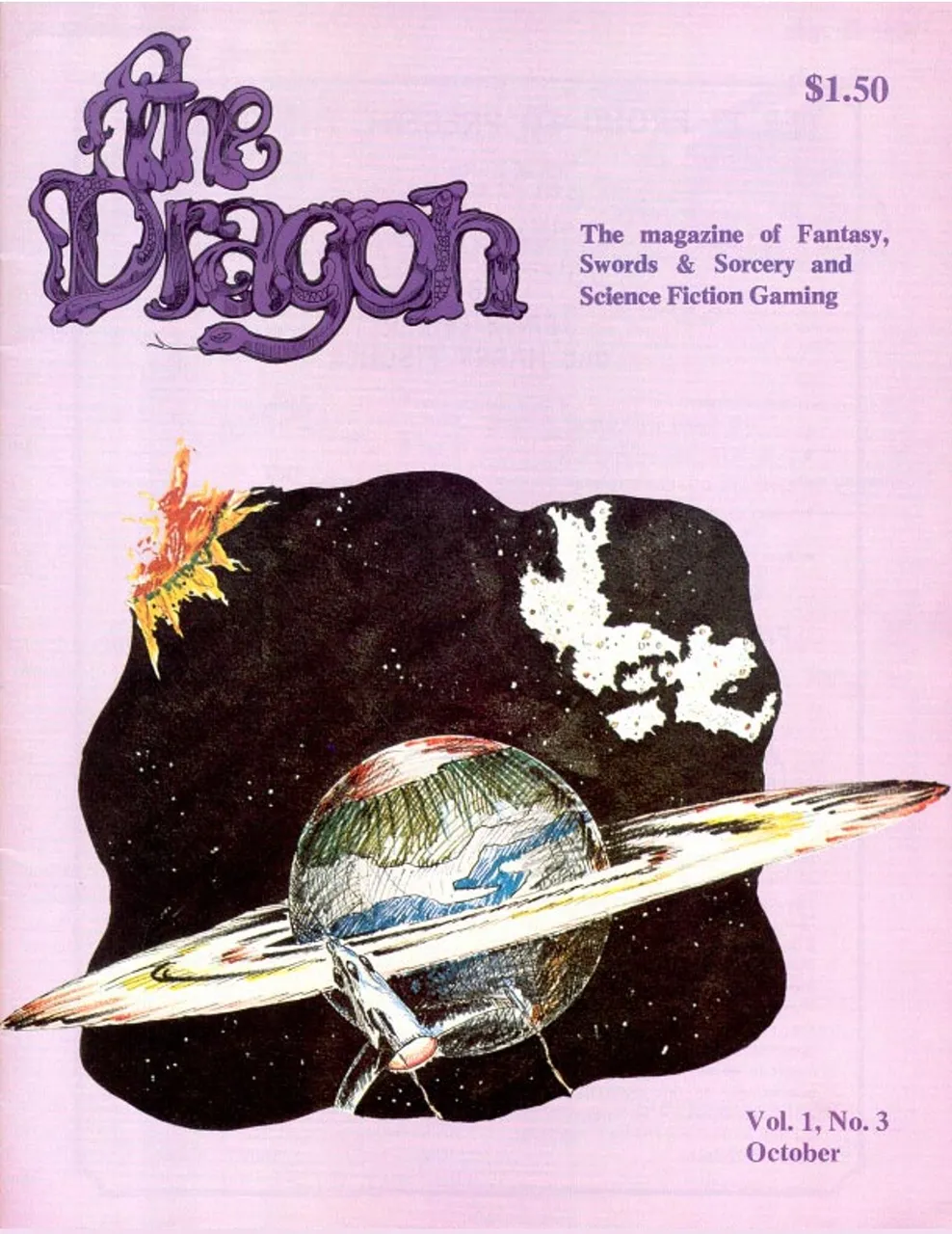
It's been a while since I did one of these, and I didn't have anything special planned for today, so here's a look at issue #3 of The Dragon. The tagline bills it as "The magazine of Fantasy, Swords & Sorcery and Science Fiction Gaming", and the cover artwork of this issue (a collaboration between John M. Seaton and Ivor M. Janči) leans into this fully. That's quite the purple motif they have going there, isn't it?
Same disclaimer about image use as last time: I don't own this issue (because expensive magazine is expensive), but I own The Dragon Magazine Archive, which gives me access to a wonderfully easy-to-read PDF of every page. All images you see in the article are thus sourced from that. Let's get started!
We open with an editorial by Tim Kask, addressing criticism that The Dragon has contained too much fiction in its previous issues. Kask asserts that since every game we play is itself a work of fiction, that fiction can and should have its place in a magazine dedicated to gaming. That said, due to the criticism, they are going to be printing fewer stories going forward.
With only 32 pages of content in these early issues, several of which are devoted to advertising, paired with the, shall we say, uneven quality of the work thusfar showcased, I can understand people not being happy about the short stories. This being the mid-70s, there are also any number of other periodicals which feature nothing but fantasy and science fiction stories for people looking to scratch that itch.
Gary Gygax asks, "Does Anyone Remember War of the Empires?". WotE was a play-by-mail sci-fi game run by Tullio Proni which enjoyed a brief run of success in the 1960s before falling by the wayside. A few different people, including Gygax himself, tried to revive interest in it in the late 60s and early 70s, but to little avail. Gygax is again trying to gin up interest in the game via this write-up, offering to serve as its controller if enough people would consider playing again.
A portion of the middle of this article is missing, with the text between pages 4 and 5 obviously missing some transitionary elements. Given Gygax's write-up, it sounds like War of the Empires in 1969 could be the spiritual precursor to the sort of multi-player galactic mayhem seen in Eve Online today.

"Notes on Women & Magic -- Bringing the Distaff Gamer Into D&D" is an article by Len Lakofka which was cringeworthy even back in the day, to say nothing to modern times. His proposal offers new rules for female characters, including a specific 'Beauty' stat which replaces Charisma, and a massive nerf of the Strength stat which assures a range of 2 - 14 instead of the traditional 3 - 18 enjoyed by males. Female characters are also treated as being one level weaker than their male counterparts in order to balance Experience Point costs for level advancement (because, sure, that makes sense...). Extremely Beautiful (or Ugly) women get access to 'Seduction' magic -- Ugly women can frighten people to death based on their looks, while Gorgeous ones can charm their targets. The exception here are Lawful and Neutral Clerics, who don't get a Beauty stat because...they just wouldn't behave like harlots, you know?
I dunno, Len, if your goal is to bring more women to the table, maybe don't start with the premise that female D&D characters are the equivalent of second-class citizens? "But they get to be hot and can, like, do tarot readings and seduce dudes from time to time!" doesn't exactly make up for screwing them over in the stats and levels department. This is a problem which plagues the game all the way up until 3rd edition, when Wizards of the Coast rightfully drops the "alternate" rules for male and female character creation.
"The Search For the Gnome Cache" by Garrison Ernst (aka Gary Gygax) continues in part three, with Dunston throwing in his lot with a group of adventurers who turn out to be a bunch of cutthroat outlaws. He later browbeats a stableboy into serving as his guide, promising him he'd be well-compensated for his service then reneging on the offer once he's gotten what he needs. "To be continued," the text threatens.
If Tim Kask was serious in eliminating crappy fiction from the pages of the magazine, he'd have done well to cut this malarkey. Then again, since it was written by his own boss, I somehow doubt that was ever an option. Gygax gives up on it himself after a while, so at least there's that. Duston's still a colossal asshole.
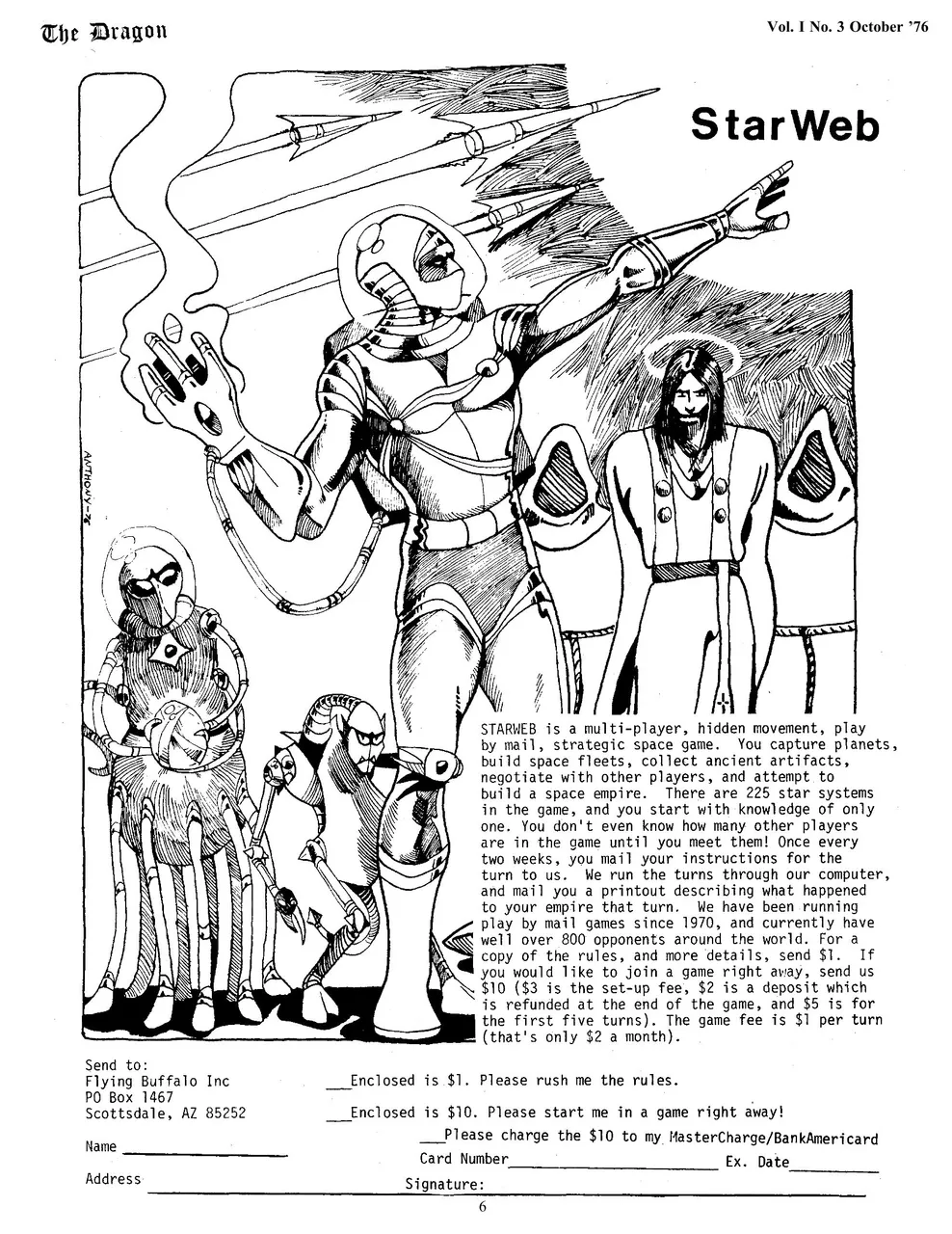
"Birth Tables for D&D", provided by Brad Stock and Brian Lane, is a simple set of tables used to randomly generate a character's social standings, familial status (everything from first-born to bastard), number of siblings, parental lines of work, whether or not one's father is still alive, even up to and including race, class, level, and starting money.
This is an interesting idea, and most of the tables could be used even today to quickly roll up a bunch of random NPCs for use in a city or town setting if the DM needs to add flavor to their world. Alternately, players who hate making up their own backgrounds for characters could use this too. Not particularly ground-breaking, but far from the worst thing in this issue.
"The Adventures of Finieous Fingers" makes its debut in Dragon with this issue. This is a full-page comic with actual artwork, as opposed to the three-panel "just eyes and dialog" fare of Dirt. Finieous proves to be a hit with readers, and J.D. Webster's creation even shows up in the pages of other magazines throughout the 80s.
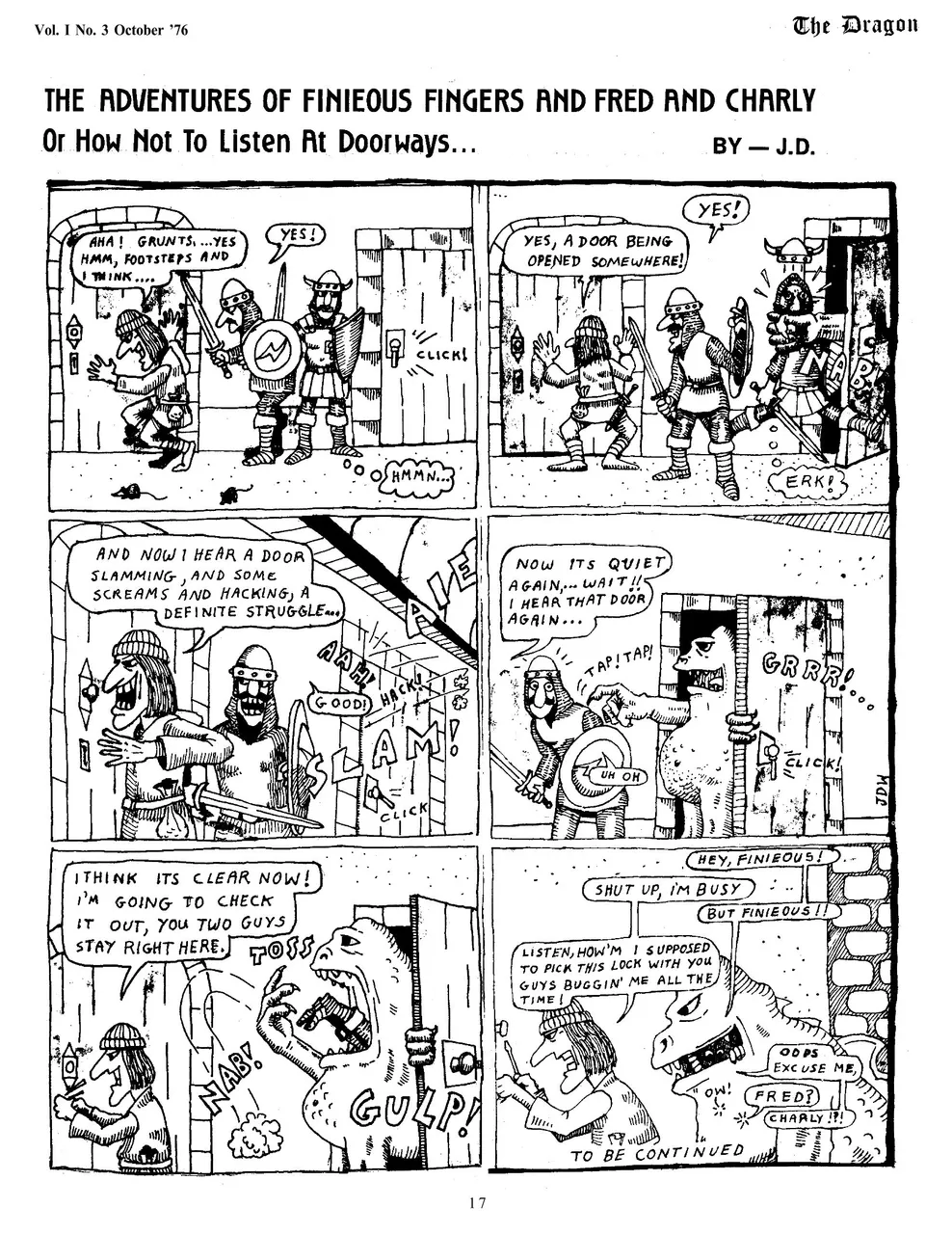
Poor Fred and Charly.
"Wargaming World" by editor Tim Kask offers reviews of some of the new miniature figure lines from manufacturers like Grenadier, Custom Cast, and Ral Partha. He seems especially excited for Valiant Miniatures lineup of new spacecraft, which start small but can be customized and fit together in a variety of fashions to create your own larger, unique ships.
Most amusingly, Archive Miniatures introduced a "Barbarian Duck" figure (a picture of which, along with numerous others in their line, can be seen on this page patterned off none other than Marvel's Howard the Duck. Who, I ask, was this being marketed towards?
"Mapping the Dungeons" has expanded to include an international section in this issue, so gamers from Canada and England now have at least a couple of options.
"Out on a Limb" arrives this issue with a bevy of reader letters out to applaud and diss the magazine for various reasons. The standout is from a guy who wrote to TSR seeking permission to photocopy some of the game's tables and charts so his friends could have easy access to them in a more convenient format only to be told no, and who is now lodging a formal protest -- for which he is both slapped down again by the editor, and also directed to Judge's Guild's line of products as being potentially useful. "Don't Xerox our material, buy our competition's instead!" is certainly a stance one can take, but damn . . . !
The other standout is Lew Pulsipher getting into a pissing contest with Larry Smith over Smith's article from an earlier issue about the various elves from Tolkien's literature. Magazine letter columns from this era can sometimes just be slower versions of the flame wars carried out on fan forums today. "The more things change," and all that jazz. Anybody got Stephen Colbert's address from 1976 so we could have him settle this debate for us?
"A Plethora of Obscure Sub-Classes" is a collection of character class submissions by various authors, all offering up exactly what it says in the title. Now you can play as a Healer, a Scribe, a Berserker, a Samurai, a Jester, or an Idiot Savant (with the last two clearly being parody/joke classes, inappropriate for most standard campaigns). There's also an in-depth look at, and expansion of, Dwarven abilities, likely offered up because demi-humans were mega-nerfed when compared to their Human counterparts.
Despite their class name, Healers don't actually get to heal anybody until level 3. Berserkers are absurdly over-powered compared to your bog-standard fighters, gaining the ability to shapeshift into one of several were-forms upon attaining a few levels, with their only real limitations being an Intelligence below 9, and the inability to wear armor or use shields of any kind. As against this, they receive a 1-point bonus to their base Armor Class with every 2 levels they gain, so Berserkers with high Dexterity will eventually outclass even fighters in full plate.
The Samurai gets Judo as a form of unarmed combat, making him capable of defending himself even when disarmed. He also gets access to traditional Japanese armaments like the katana, wakizashi, samurai armor, and the Yumi (longbow). The only real restriction is a required Dexterity of 15 or greater. Surprisingly, this doesn't seem terribly unbalanced to me, and is an interesting take on the classic Fighter.
Scribes are money-grubbing munchkins, seemingly created to part the PCs from their hard-earned gold, as they have no special abilities beyond the power to read magic and copy spells from books, a service which they provide for an exorbitant fee which only gets more outlandish as the level of spell being copied gets higher. These would never make it as standard PCs, but work fine as NPCs, especially for a DM trying to off-load some of his players' coinage without resorting to literal in-game thievery.
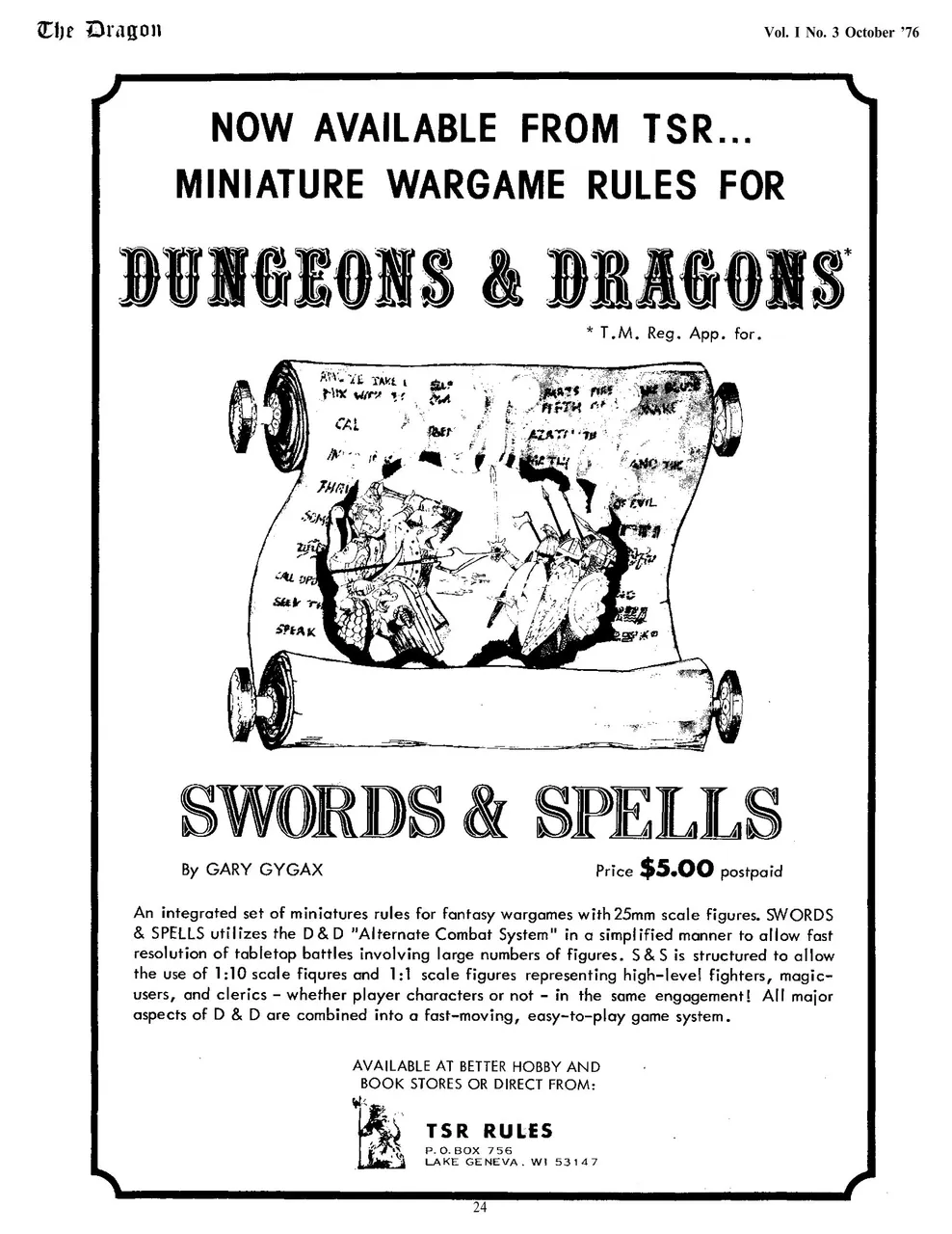
"Dirt" continues, with Omar and Irving's game interrupted by the GenCon IX crowd passing through. Ho boy, laugh a minute with this comic, I swear...
"GenCon IX's D&D Elimination Tournament" is Bob Blake addressing questions about why he chose to run this 100-person tourney the way he did. Probably a lot more interesting if you were at the thing, but he plans to do much the same at GenCon X, so you've been warned.
"Combat Modifications For Dexterity" by Steve Cline is a chart that offers up optional modifiers for to-hit and damage with both melee and ranged weapons, along with Armor Class modifications, based on a character's Dexterity score. It posits a form of "Exceptional Dexterity" (akin to "Exceptional Strength") which offers higher bonuses with more Exceptional Dex. This is potentially abusive, especially when combined with the Exceptional Strength rules already on offer in the game, so it's no surprise this never carried over into subsequent editions.
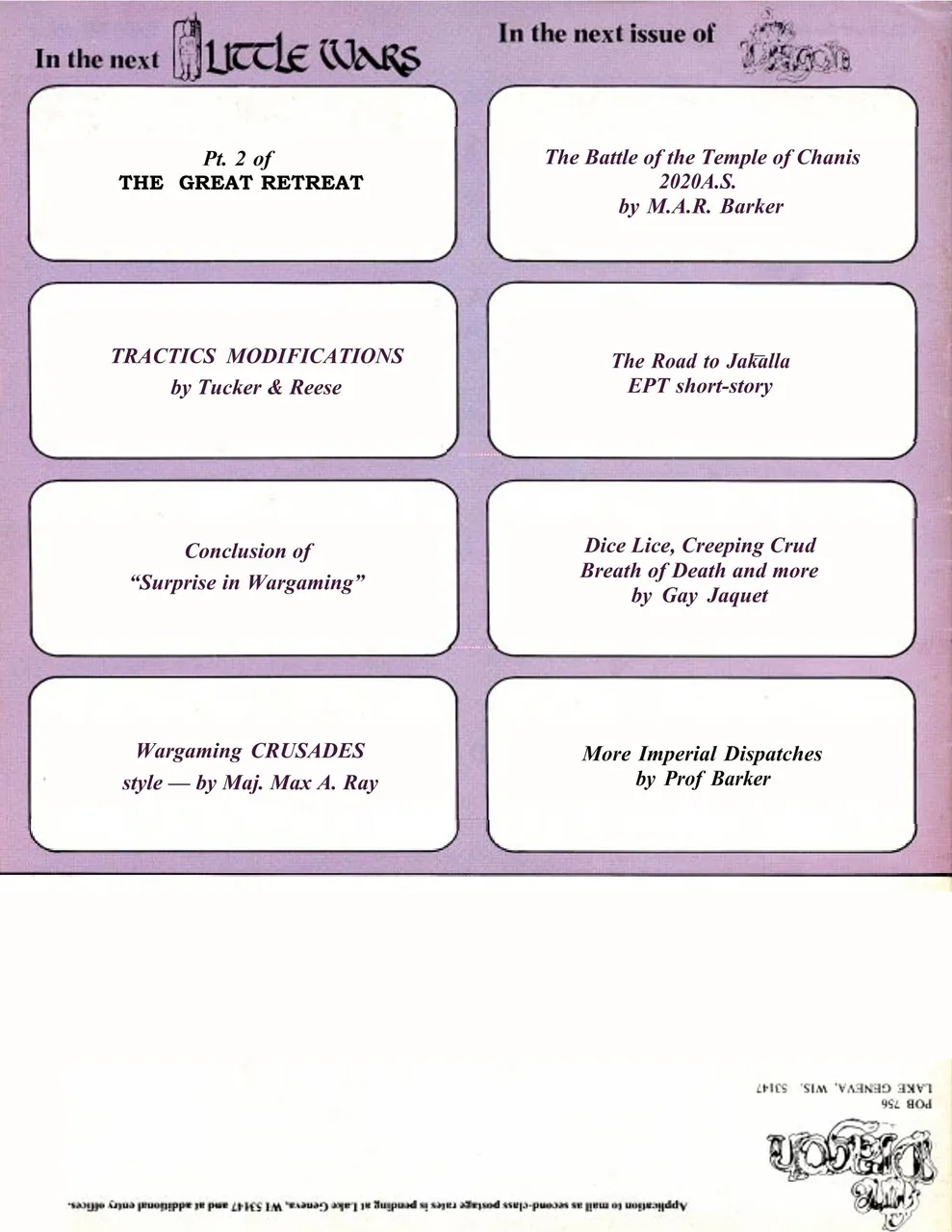
I think the best phrase to describe this issue is "growing pains". Articles range from borderline offensive to marginally useful, the fiction is nothing to write home about, and for a magazine going with a spacefaring theme on the front cover, there's nothing on the inside to play to that image aside from Gygax's reminiscing about a now-defunct PBM game and Kask's excitement over the space-themed line of minis. Still, we're only three issues in, the pool of contributions is likely still small, and at this point, beggars can't be choosers. Mildly entertaining in the historical sense, but I can't really see using anything from this issue in any of my campaigns from back in the day, to say nothing of today.
This is 3/10 or 4/10 territory for me, but maybe you thought differently? Let me know, and I'll be back at some point in the future with a look at Issue #4!